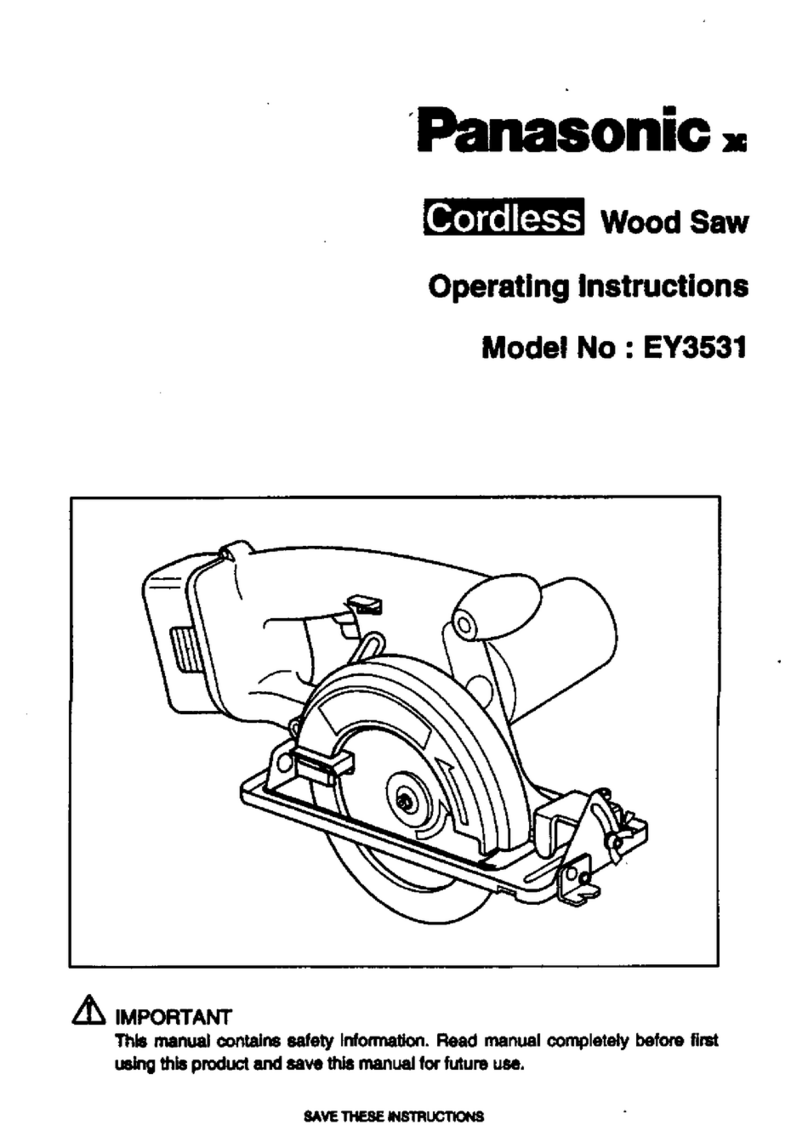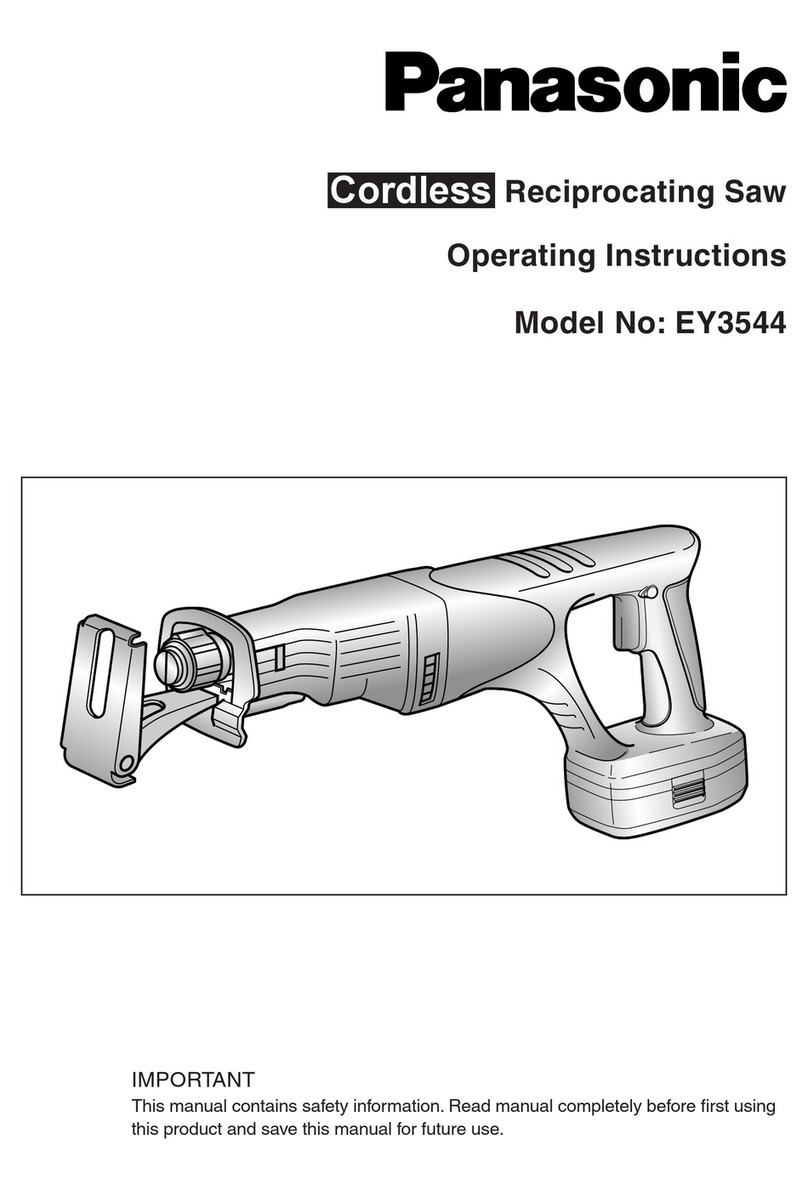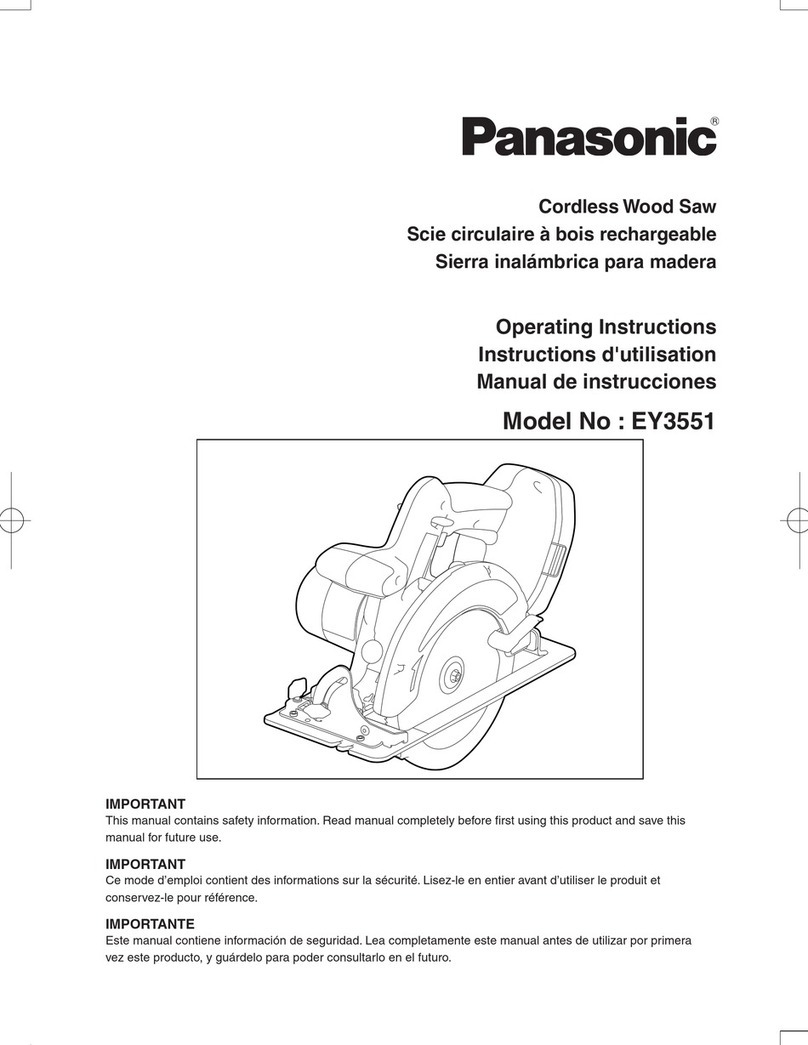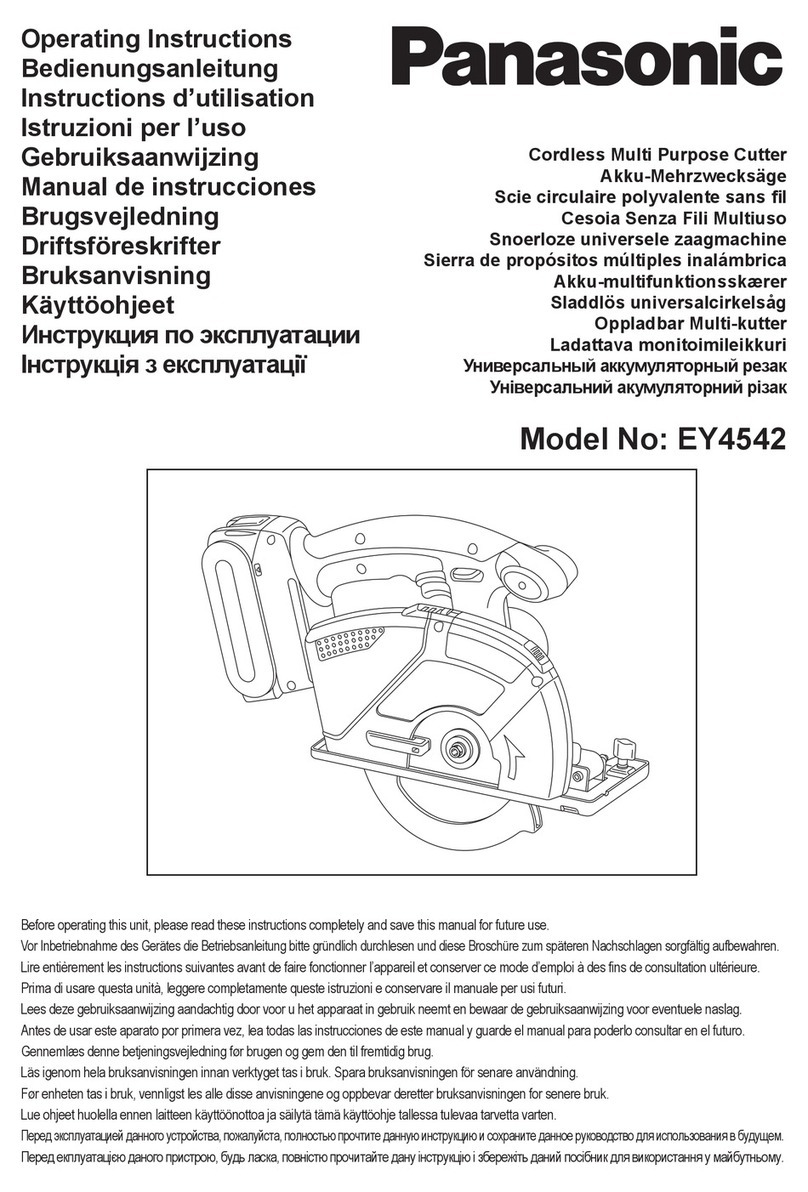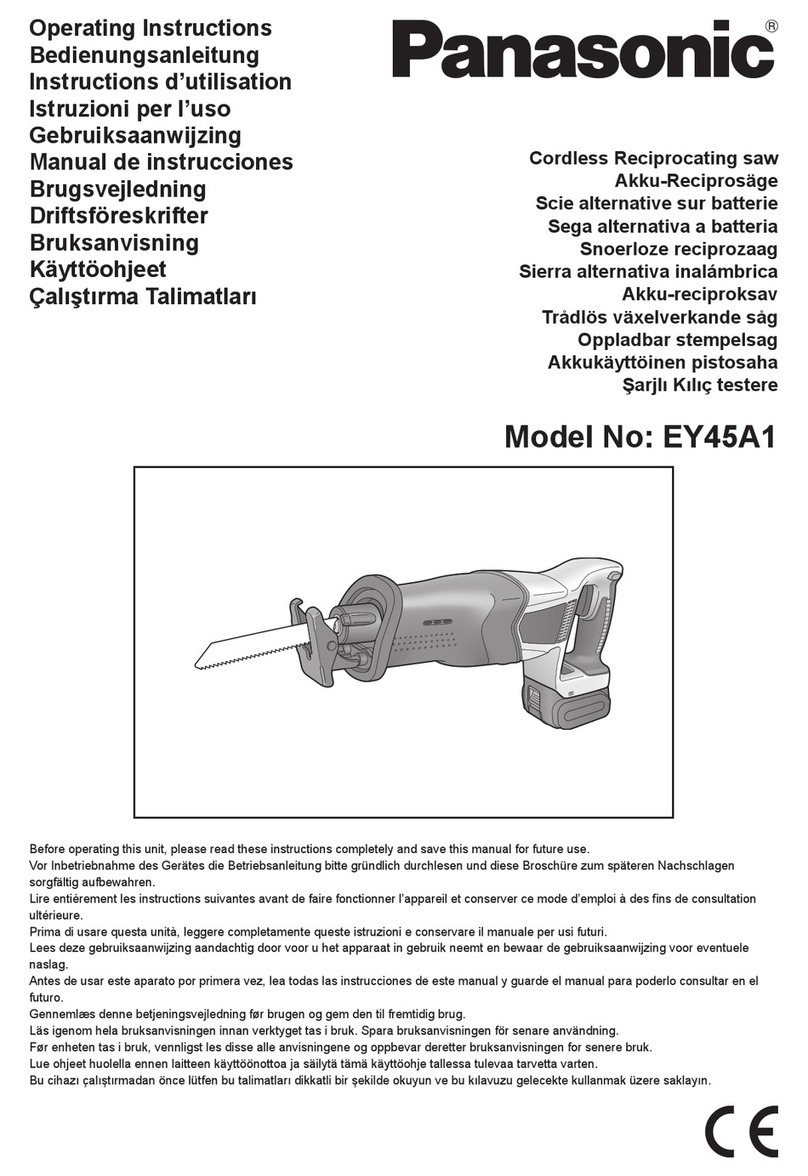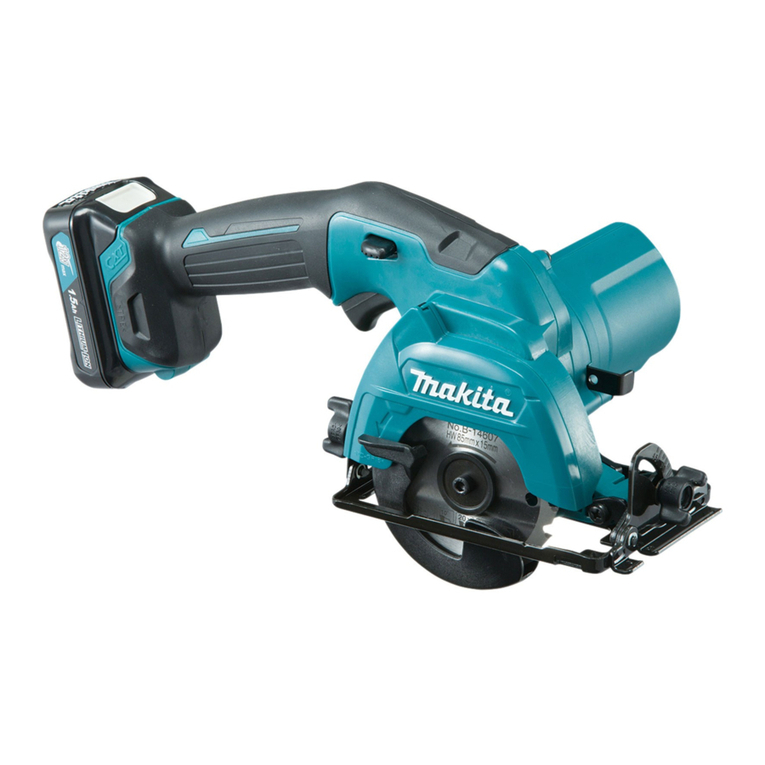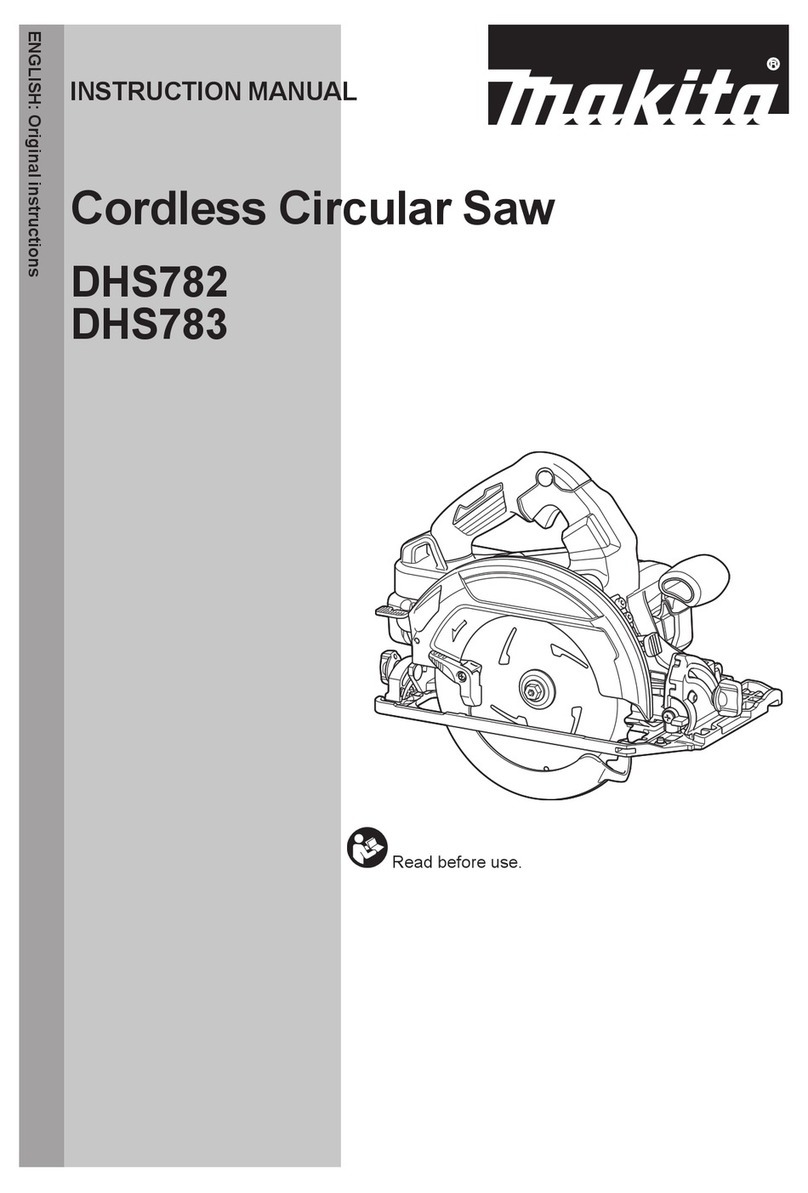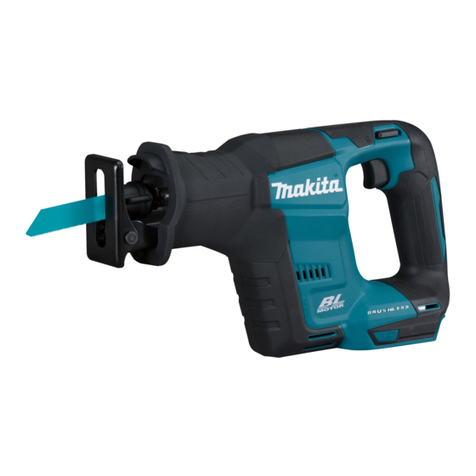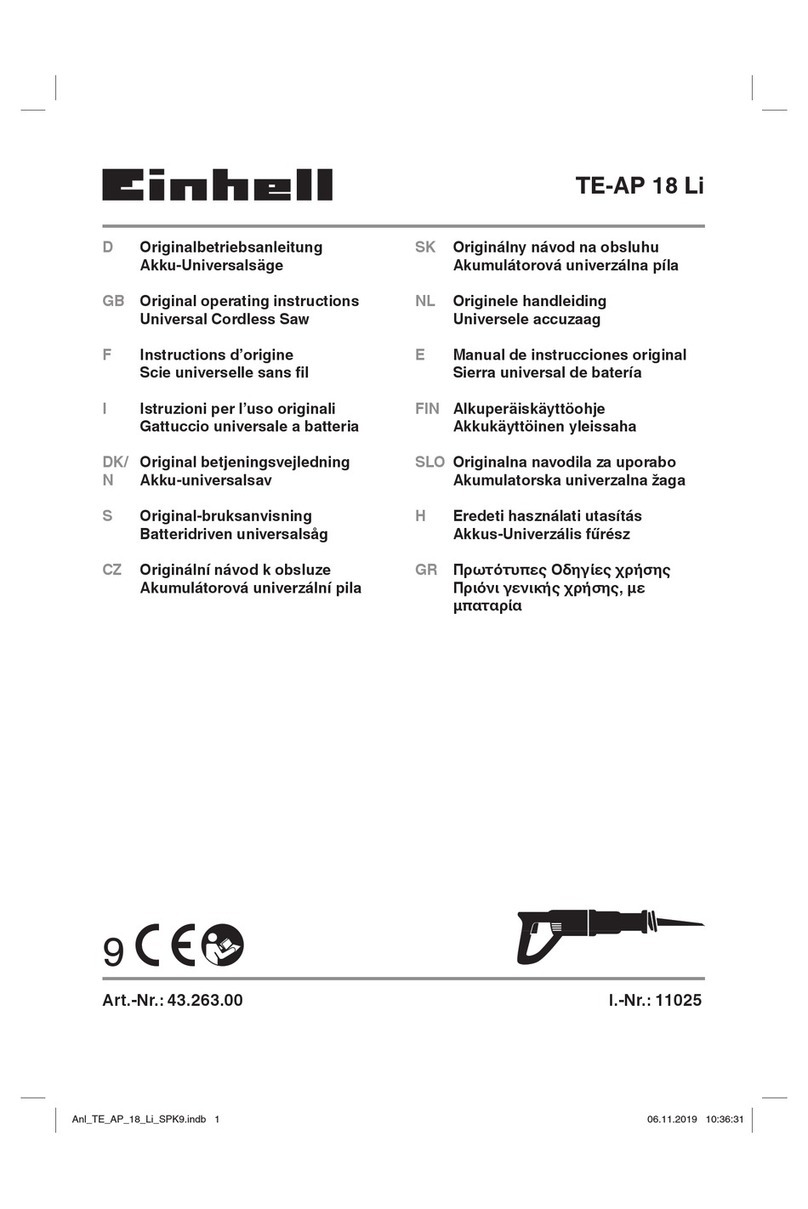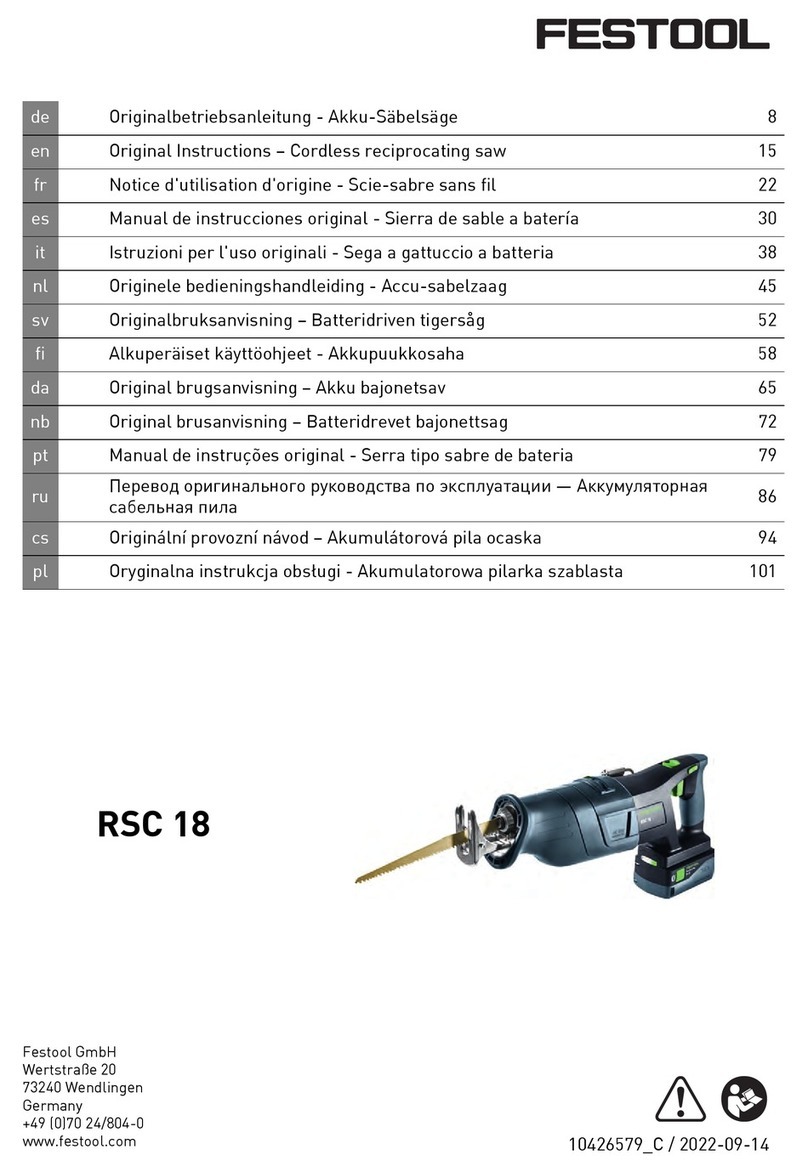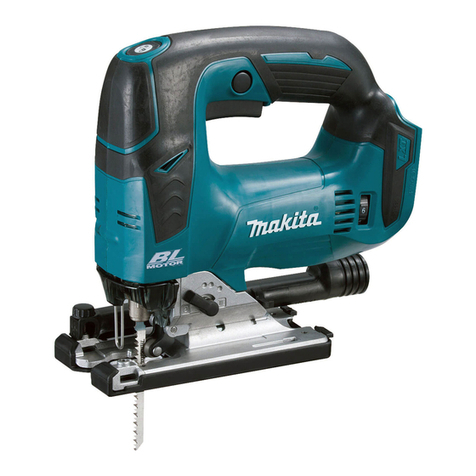
-7-
Use of the power tool for operations
different from those intended could
result in a hazardous situation.
Battery Tool Use and Care
1) Ensure the switch is in the off
position before inserting battery
pack.
Inserting battery pack into power
tools that have the switch on invites
accidents.
2) Recharge only with the charger
specified by the manufacturer.
A charger that is suitable for one type
of battery pack may create a risk of
fire when used with another battery
pack.
3) Use power tools only with specifi-
cally designated battery packs.
Use of any other battery packs may
create a risk of injury and fire.
4) When battery pack is not in use,
keep it away from other metal
objects like paper clips, coins,
keys, nails, screws, or other small
metal objects that can make a
connection from one terminal to
another.
Shorting the battery terminals togeth-
er may cause burns, or a fire.
5) Under abusive conditions, liquid
may be ejected from battery; avoid
contact. If contact accidentally
occurs, flush with water. If liquid
contacts eyes, additionally seek
medical help.
Liquid ejected from the battery may
cause irritation or burns.
Service
1) Have your power tool serviced by
a qualified repair person using
only identical replacement parts.
This will ensure that the safety of
power tool is maintained.
III.
SPECIFIC SAFETY
RULES
1) Hold tool by insulated grip-
ping surfaces when performing
an operation where the cutting
tool may contact hidden wiring.
Contact with a “live” wire will also
make exposed metal parts of the tool
“live” and shock the operator.
2) Use clamps or another practical
way to secure and support the
workpiece to a stable platform.
Holding the work by hand or against
your body leaves it unstable and may
lead to loss of control.
3) Keep hands away from cutting
area and blade. Keep your insulat-
ed gripping surfaces. If both hands
are holding the tool, they cannot be
cut by the blade.
4) Never hold piece being cut in your
hands or across your leg. It is
important to support the work proper-
ly to minimize body exposure or loss
of control.
5) Be aware that this tool is always
in an operating condition, since it
does not have to be plugged into
an electrical outlet.
6) Always use safety goggles or
glasses with side shields. Ordi-
nary eye or sun glasses are NOT
safety glasses.
7) When this tool is used for woodw
orking in confined areas (e.g.
indoors), wear dust mask.
8) Avoid cutting nails. Inspect work-
piece for any nails and remove
them before operation.
9) Do not cut oversized workpiece.
10) Check for the proper clearance
beyond the workpiece before
cutting so that the blade will not
strike the floor, workbench, etc.
11) Hold the tool firmly.
12) Make sure the blade is not con-
tacting the workpiece before the
switch is turned on.


